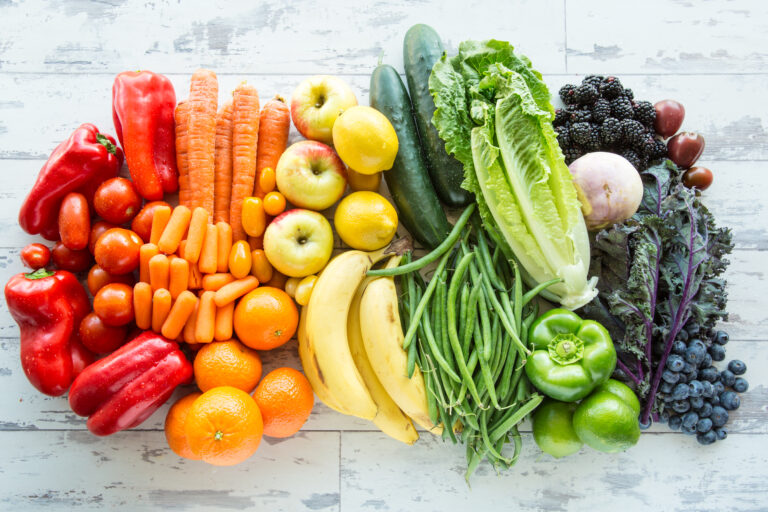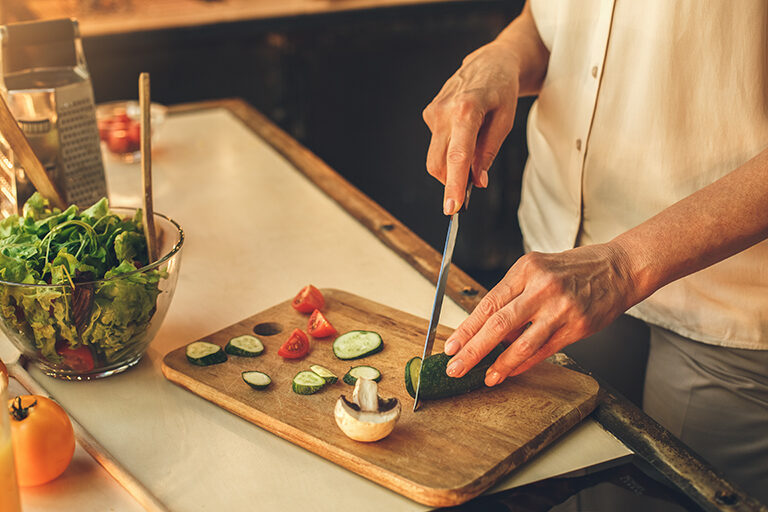
Living Well at Home

Walking through the grocery store, it may seem impossible to shop for nutritious food while staying within a budget. These seven simple tips may help you save on the essentials during your next grocery run.
Have a plan for perishable items
Fruit and vegetables are essential to healthy eating, but if you don’t have time to eat them before they spoil, then it’s money wasted. When picking produce, choose some pieces that are ready to eat immediately, and some that need a few days to ripen. Also consider options that are less expensive, but still nutritious, like bananas.
Buy non-perishable items in bulk
Canned or dried items like beans are great options to buy in bulk. Although the cost up front might be higher, the total cost over weeks or months can be significantly lower. Some other less obvious bulk-buying options include oats, popcorn kernels, whole wheat pasta, brown rice, and healthy cooking oils such as olive or sesame oil. You can also get canned vegetables, just be sure they have no added salt.
Consider plant-based proteins and frozen meat
Meat and seafood can be delicious and nutritious options for proteins, but there are many plant-based options that are more affordable and have longer shelf lives. Tofu has fiber and is known to help lower some types of cholesterol. Beans and legumes are a powerhouse source of protein and fiber. Some great options are lentils, split peas, black beans, and kidney beans.
For meat-based protein, buying meat in bulk or on sale and freezing unused portions or buying frozen meat will be most cost-effective. Always try to look for options with less sodium or added preservatives.
Buy generic
Buying generic can save a substantial amount of money. Two key tips to consider when purchasing generic: check the ingredients and make sure they are similar to the name-brand you enjoy, and compare the price per ounce. Often, generic brands contain more food in the package. By looking at the price per ounce, you can see what your savings really are.
Shop your kitchen first
Before you head out to the store, take inventory of what you already have. Check to see what fruits and vegetables might be spoiling soon and plan a meal around them, or only purchase sides to supplement the food still in the fridge. All the work you put into saving money on your shopping trips goes to waste if you don’t actually eat the food!
Also, think about what you throw out most often and make a conscious effort to find a replacement that you or your family might be more likely to consume.
Swap and save
Next time you have extra food that might go bad before you can eat it, offer it to a neighbor or friend—and they might do the same for you! You can also preplan food swaps so you can take advantage of lower prices of bulk items. For example, if you buy an extra large bag of apples, ask your neighbor to do the same for oranges and then split them. With some creative planning, you can get variety at lower prices.
Know your local shops
Be sure to look for sales and find the local markets with the best prices. In some places that might be your local grocery store, in others it might be the big, wholesale markets, and in others it might be the smaller bargain outlets. Check out store circulars and coupons—just be sure to focus on fresh fruits and vegetables, proteins, and other healthy options and limit processed foods.
For more tips on eating well and resources like the MyPlate method, check out:
Related Articles


